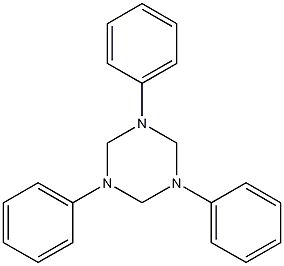3,5-Bis(trifluoromethyl)iodobenzene


Structural formula
| Business number | 0489 |
|---|---|
| Molecular formula | C8H3F6I |
| Molecular weight | 340.01 |
| label |
1,3-bistrifluoromethyl-5-iodobenzene, 3,5-bis(trifluoromethyl)iodobenzene, 3,5-Bis(trifluoromethyl)iodobenzene, 1,3-bis(trifluoromethyl)iodobenzene, 1-iodo-3,5-bis(trifluoromethyl)benzene, 3,5-Bis(trifluoromethyl)iodobenzene, 97+%, MBT-I, 1,3-BIS(TRIFLUOROMETHYL)-5-IODOBENZENE, 1-IODO-3,5-BIS(TRIFLUOROMETHYL)BENZENE, 1-IODO-3,5-DI(TRIFLUOROMETHYL)BENZENE, 3,5-BIS(TRIFLUOROMETHYL)-1-IODO BENZENE, 3,5-BIS(TRIFLUOROMETHYL)IODOBENZENE, TIMTEC-BB SBB006562, 3,5-Bis(trifluoromethyl)iodobenzene 9 |
Numbering system
CAS number:328-73-4
MDL number:MFCD00040837
EINECS number:None
RTECS number:None
BRN number:2461627
PubChem number:24862691
Physical property data
一 , physical property data
Characteristics:Light pink liquid
Density (g/mL,25/4℃): 1.919
Relative Vapor density (g/mL, air=1):Not available
melt ���(ºC):Not available
Boiling point (ºC, normal pressure): 59-61
Boiling point (ºC, 5.2kPa): Not available
Refraction Rate: 1.463
Flash Point (ºC): Not available
Optical rotation (º): Not available
Spontaneous combustion Point or ignition temperature (ºC): Not available
Steam Pressure (kPa, 25ºC): Not available
saturated Vapor pressure (kPa, 60ºC): Not available
Burn Heat (KJ/mol):Not available
Critical Temperature (ºC): Not available
Critical Pressure (KPa): Not available
oil and water Log value of the (octanol/water) partition coefficient:Not available
Explosion Upper limit (%, V/V): Not available
Explosion Lower limit (%, V/V): Not available
Dissolve Properties: Not available
Toxicological data
Two , Toxicological data:
Acute Toxicity:Not available .
Ecological data
Three , Ecological data:
1 ,Other harmful effects: This substance may be harmful to the environment, and special treatment should be given to water bodies. Notice.
Molecular structure data
1. Molar refractive index:49.11
2. Molar volume (m3/mol):178.5
3. Isotonic specific volume (90.2K): 397.2
Dissolve Properties: Not available
Toxicological data
Two , Toxicological data:
Acute Toxicity:Not available .
Ecological data
Three , Ecological data:
1 ,Other harmful effects: This substance may be harmful to the environment, and special treatment should be given to water bodies. Notice.
Molecular structure data
1. Molar refractive index:49.11
2. Molar volume (m3/mol):178.5
3. Isotonic specific volume (90.2K): 397.2
4. Surface tension (dyne/cm): 24.5
5. Polarizability(10 -24cm3):19.47
Compute chemical data
1. Reference value for hydrophobic parameter calculation (XlogP): 4.3
2. Number of hydrogen bond donors: 0
3. Number of hydrogen bond acceptors: 6
4. Number of rotatable chemical bonds: 0
5. Number of tautomers: None
6. Topological molecule polar surface area 0
7. Number of heavy atoms: 15
8. Surface charge: 0
9. Complexity: 198
10. Number of isotope atoms: 0
11. Determine the number of atomic stereocenters: 0
12. Uncertain number of atomic stereocenters: 0
13. Determine the number of chemical bond stereocenters: 0
14. Number of uncertain chemical bond stereocenters: 0
15. Number of covalent bond units: 1
Properties and stability
None yet
Storage method
None yet
Synthesis method
None yet
Purpose
None yet
.0pt” align=left>4. Surface Tension (dyne/cm):24.5
5. Polarizability(10 -24cm3):19.47
Compute chemical data
1. Reference value for hydrophobic parameter calculation (XlogP): 4.3
2. Number of hydrogen bond donors: 0
3. Number of hydrogen bond acceptors: 6
4. Number of rotatable chemical bonds: 0
5. Number of tautomers: None
6. Topological molecule polar surface area 0
7. Number of heavy atoms: 15
8. Surface charge: 0
9. Complexity: 198
10. Number of isotope atoms: 0
11. Determine the number of atomic stereocenters: 0
12. Uncertain number of atomic stereocenters: 0
13. Determine the number of chemical bond stereocenters: 0
14. Number of uncertain chemical bond stereocenters: 0
15. Number of covalent bond units: 1
Properties and stability
None yet
Storage method
None yet
Synthesis method
None yet
Purpose
None yet








